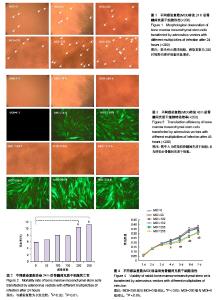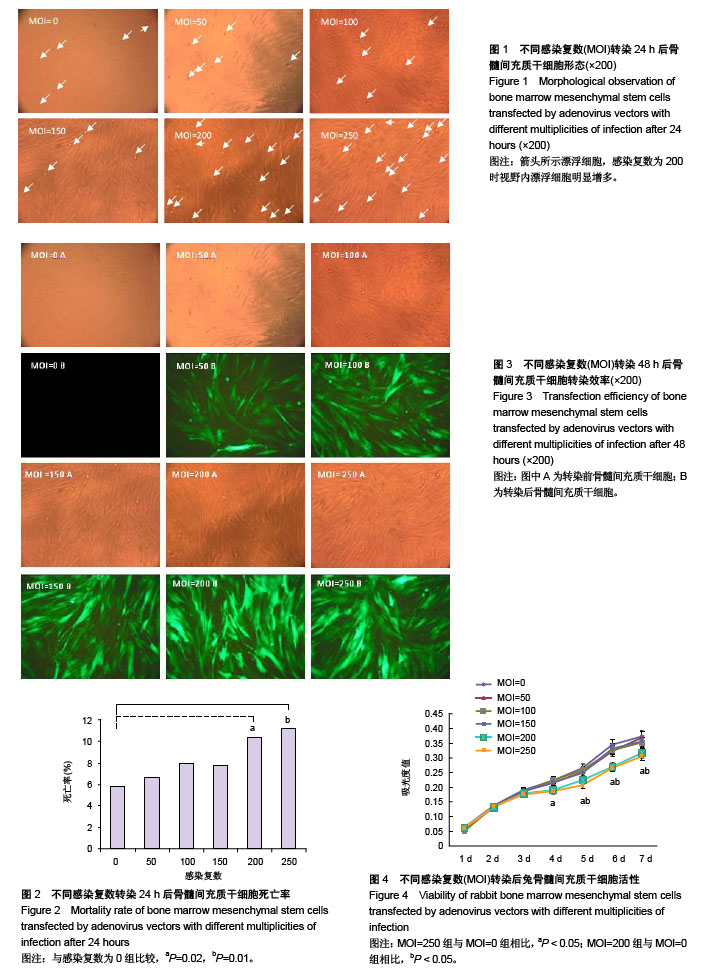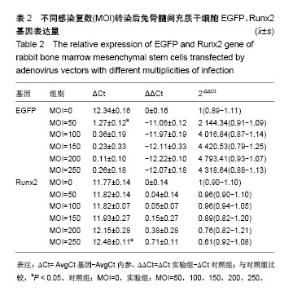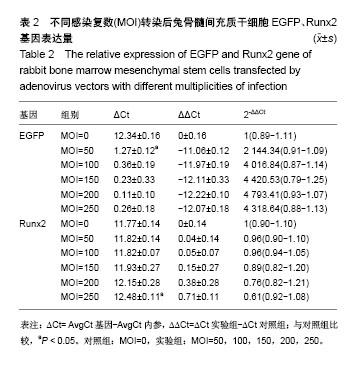| [1] 许锋,詹玉林,宋兴华. 骨形态发生蛋白2基因治疗骨缺损研究进展[J]. 医学综述,2012,18(11):1612-1614.[2] Wang S, Qu X, Zhao RC. Clinical applications of mesenchymal stem cells. J Hematol Oncol. 2012;5:19.[3] Grigsby CL, Leong KW. Balancing protection and release of DNA: tools to address a bottleneck of non-viral gene delivery. J R Soc Interface. 2010;7 Suppl 1:S67-82.[4] 仲照东,邹萍,游泳,等. 重组腺病毒AdEGFP/hVEGF165快速构建及在骨髓移植小鼠体内的分布和表达效率[J]. 中华实验和临床病毒学杂志,2004,18(1):35-38. [5] 武成聪,李强,陈佳滨,等. 短期冻存兔骨髓间充质干细胞对其生物特性的影响[J]. 重庆医学,2014,43(4):459-461,464.[6] Cartier R, Reszka R. Utilization of synthetic peptides containing nuclear localization signals for nonviral gene transfer systems. Gene Ther. 2002;9(3):157-167.[7] Laurencin CT, Attawia MA, Lu LQ, et al. Poly(lactide-co-glycolide)/hydroxyapatite delivery of BMP-2-producing cells: a regional gene therapy approach to bone regeneration. Biomaterials. 2001;22(11):1271-1277.[8] 毛颖佳,郑源强,石艳春. 慢病毒载体及其应用的研究进展[J]. 中国生物制品学杂志,2009,22(2):196-200.[9] Nault JC, Datta S, Imbeaud S, et al. Recurrent AAV2-related insertional mutagenesis in human hepatocellular carcinomas. Nat Genet. 2015;47(10):1187-1193.[10] Shi S, Mercer S, Trippel SB. Effect of transfection strategy on growth factor overexpression by articular chondrocytes. J Orthop Res. 2010;28(1):103-109.[11] 王晓旭,何敏,谭文甫,等. 腺病毒介导人TGF-β1基因转染自体腘绳肌腱重建兔前交叉韧带术后的表达[J]. 中国修复重建外科杂志,2016,30(10):1233-1237.[12] Yu D, Jin C, Ramachandran M, et al. Adenovirus serotype 5 vectors with Tat-PTD modified hexon and serotype 35 fiber show greatly enhanced transduction capacity of primary cell cultures. PLoS One. 2013;8(1):e54952.[13] 郝嘉,游凯,肖颖彬. 腺病毒载体,最有潜力的心血管疾病治疗载体[J]. 中国医科大学学报,2010,39(9):689-693,697.[14] 裴树俊,徐学武,俞卫锋,等. 鞘内注射一代和三代腺病毒载体免疫反应的比较[J]. 生物技术,2009,19(3):58-61.[15] Wiedenmann J, Oswald F, Nienhaus GU. Fluorescent proteins for live cell imaging: opportunities, limitations, and challenges. IUBMB Life. 2009;61(11):1029-1042.[16] 张全彬,王黎明,徐燕. 重组腺病毒介导增强型绿色荧光蛋白基因转染兔骨髓间充质干细胞[J]. 中国组织工程研究与临床康复, 2009,13(23):4452-4456.[17] Noda A, Hirai Y, Kodama Y, et al. Easy detection of GFP-positive mutants following forward mutations at specific gene locus in cultured human cells. Mutat Res. 2011;721(1): 101-107.[18] 张琼宇,马珊珊,唐小标,等. 病毒感染复数影响腺病毒感染T淋巴细胞效率的初步研究[J]. 生命科学研究,2017,21(4):312-317.[19] Koenig A, Norgard-Sumnicht K, Linhardt R, et al. Differential interactions of heparin and heparan sulfate glycosaminoglycans with the selectins. Implications for the use of unfractionated and low molecular weight heparins as therapeutic agents. J Clin Invest. 1998;101(4):877-889.[20] 刘旭平,范里,朱明龙,等. MOI对HEK293细胞感染病毒后的生长代谢和腺病毒扩增效率的影响[J]. 高校化学工程学报,2010, 24(4):638-644.[21] Tsai YC, Tsai TH, Chang CP, et al. Linear correlation between average fluorescence intensity of green fluorescent protein and the multiplicity of infection of recombinant adenovirus. J Biomed Sci. 2015;22:31. [22] 张淑香,李东晓,朱明龙,等. 谷氨酰胺限制对杂交瘤细胞生长、代谢和单抗生产的影响[J]. 高校化学工程学报,2008,22(1):77-82.[23] 徐练,孔清泉. 调控成骨细胞分化及骨形成关键信号通路的研究进展[J]. 中国修复重建外科杂志,2014,28(12):1484-1489.[24] 边素艳,盖鲁粤,叶平,等. 腺病毒载体对骨髓间充质干细胞体外分化能力的影响[J]. 中国现代医学杂志,2010,20(8):1152-1156. |



